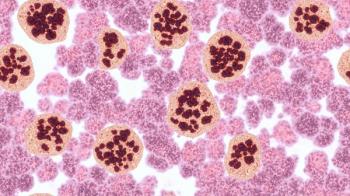
Study: Risk Factors Associated With Developing Ocular Complications Following Shingles Diagnosis
Key Takeaways
- Shingles, or herpes zoster, can lead to ocular complications, with keratitis being the most common issue.
- The study identified age, female gender, corticosteroid use, and stromal keratitis as risk factors for ocular complications.
Female and older patients had a greater incidence of herpes zoster ophthalmicus and were more likely to develop ocular complications.
New study findings published in the American Journal of Ophthalmology assessed the epidemiology of shingles and herpes zoster ophthalmicus (HZO), in an urban hospital setting to determine the associated risk factors in connection to developing ocular complications. The results found that specific characteristics and comorbidities were linked to ocular problems among individuals with HZO.1
Shingles, medically known as herpes zoster (HZ), arises following the reactivation of the varicella zoster virus (VZV). The virus can reoccur among individuals that previously had VZN, typically appearing as chickenpox, which reactivates as shingles. Individuals with shingles can experience a painful rash in dermatomal distribution which can continue for several weeks. The study authors noted that an estimated 1 in 3 individuals will be diagnosed with shingles during their lifetime.1
A previous cohort study based on the review of medical records of individuals with shingles that were diagnosed between January 1, 1980, through December 21, 2007, was performed to provide data on the risks, types, and outcomes of eye involvement in shingles. The investigators noted that information was collected and assessed on all eye diagnoses and on shingle eye-related visits, treatment, procedures, and outcomes. Shingles was confirmed in the individuals by the incidence of a HZ-like rash and symptoms or confirmed by a positive laboratory test. Eye involvement was confirmed by a ophthalmologists’ evaluation. According to the release, the results found that out of 7370 individuals with shingles, 184 had eye involvement—with keratitis as the most common eye complication.2
The current retrospective cohort study was conducted from January 1, 2010, through December 1, 2021, among individuals seen at the University of Illinois Hospital (UIH) in Chicago that were diagnosed with shingles or HZO.1
“The incidence of HZ and HZO cases was calculated as the number of patients over the age of 18 with HZ and HZO diagnosis divided by the total number of patients over the age of 18 seen at UIH during the time period of the study,” said the study authors in the study.1
The study authors noted that 3283 individuals were diagnosed with shingles at UIH from 2010 to 2021 and 415 of those individuals were diagnosed with HZO. The mean age of individuals impacted was 52.3 years of age, 61.6% were female, 59.5% were over 50 years of age, and 37% were Black.1
The results displayed that out of 3283 individuals, ocular involvement was reported in 110 individuals with positive shingle and HZO cases. Additionally, 40 individuals developed ocular complications, with the most common complication being corneal scarring. The investigators found that age (odds ratio [OR] 1.04, 95%CI 1.0-1.1), female gender (OR 2.86, 95%CI 1.0-8.1), steroids at initial visit (4.46, 95%CI 1.4-14.6), and stromal keratitis (OR 3.45, 95% CI 1.2, 9.8) related to developing ocular complications, according to the release.1
Limitations were reported in the retrospective study because smoking status and body mass index were not available, which could have provided further data linked with complications in shingles and HZO, according to study authors.1
The findings suggested that more middle-aged individuals were impacted by shingles as female and older patients had a greater incidence of HZO and were more likely to develop ocular complications. Further findings proposed that stromal keratitis and corticosteroid use at baseline were also risk factors in developing ocular complications.1
REFERENCES
1. Risk Factors for the Development of Ocular Complications in Herpes Zoster Ophthalmicus and Zoster Vaccine Utilization in a Large, Urban Health System. American Journal of Ophthalmology. October 10, 2024. Accessed October 10, 2024. https://www.sciencedirect.com/science/article/abs/pii/S0002939424004562
2. Herpes Zoster Eye Complications: Rates and Trends. Mayo Clinic Proceedings. June 2013. Accessed October 10, 2024. https://www.sciencedirect.com/science/article/abs/pii/S0025619613002309
Newsletter
Stay informed on drug updates, treatment guidelines, and pharmacy practice trends—subscribe to Pharmacy Times for weekly clinical insights.




















































































































































































































